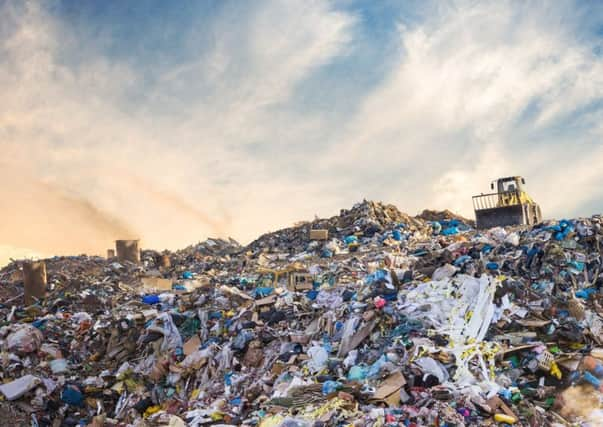Maurice Golden: Ring the changes on sustainable growth


We can no longer consume our natural resources at the current unsustainable rate, and we can no longer think of economic development as a competing force against conservation.
It is our duty to the next generation to leave the world a better place than we found it. The government’s new industrial strategy is one way in which we can achieve this vision by setting national parameters for the direction of the economy.
Advertisement
Hide AdAdvertisement
Hide AdPlacing conservation to the fore creates a “circular” economic system. This is an economic model whereby resources are used for as long as possible at their highest utility value in order to extract the maximum benefit from them.
For businesses, the implementation of circular economic models will improve their ability to control supply chains and manage long-term costs, turning inputs into assets. New business models will be encouraged around renting, leasing, servitisation, remanufacturing, and reuse. For consumers, this will provide opportunities and flexibility to reduce and manage the costs of products and services. For the environment, it can minimise negative externalities and help play a part in minimising our carbon footprint. Overall, this approach will improve environmental conditions locally and internationally.
Another pivotal factor is consumer behaviour. Today, almost everyone has a mobile phone, more clothes than we wear (one third are probably never worn), a variety of electronic devices and cars, jewellery, and other luxury items. The production of many of these items results in environmental harm and pollution. For example, take the production of a gold wedding ring. To produce a gold ring today, up to 30 tonnes of waste is created. This includes toxic waste such as cyanide, mercury, and sulphuric acid, which then finds its way into the world’s oceans, lakes, and rivers. Ten years ago, up to ten times less waste was created because the quality of ore was higher. Today, there is more gold in one tonne of waste electricals than there is in one tonne of ore. We need to be recovering this gold from waste before mining virgin ore.
To successfully transition to a sustainable industrial strategy, we need to refocus current government intervention. There is a plethora of actions government can take, but I would like to focus on three.
In the first instance, a deposit return scheme – whereby individuals are charged a small, upfront levy on bottles, which is refunded when they are returned – could increase the amount of disposable drinks containers being returned for recycling and help tackle litter, particularly ocean litter. We also need to develop an infrastructure map for waste recycling facilities which will closely link to our industrial strategy.
In addition, a centralised “design academy” would stimulate innovation and become a catalyst for embedding circular economic practices into the design sector. This would encompass system, product and business model design, as well as pioneering new technologies that enable innovative asset tracking, data management, reverse logistic solutions, and connectivity
Finally, opportunities have been identified to add value by increasing circularity in the oil and gas industry. As many as 150 of the 600 operational oil rigs in the UK Continental Shelf (UKCS) will be decommissioned before 2026, and forecast UK spending up to 2040 will total between £30 billion and £35 billion. However, value can be increased by higher levels of reuse, remanufacturing, and higher value recycling when decommissioning end of life offshore structures. From the assets that are already in place in the UKCS, 5.5 million tonnes of steel, 165,000 tonnes of reusable equipment, and 82,000 tonnes of other metals will be available for reuse, recycling, or reprocessing. We need to develop the ports and associated decommissioning facilities to best deal with these items.
Ultimately, to help conserve our planet and protect the global environment, we need to build our industrial strategy around sustainable growth.
Advertisement
Hide AdAdvertisement
Hide AdMaurice Golden MSP is the Shadow Cabinet Secretary for the Environment, Climate Change and Land Reform.
This article is an abridged version of an essay in Bright Blue’s new essay collection, Conservation Nation. Bright Blue Scotland is launching soon.